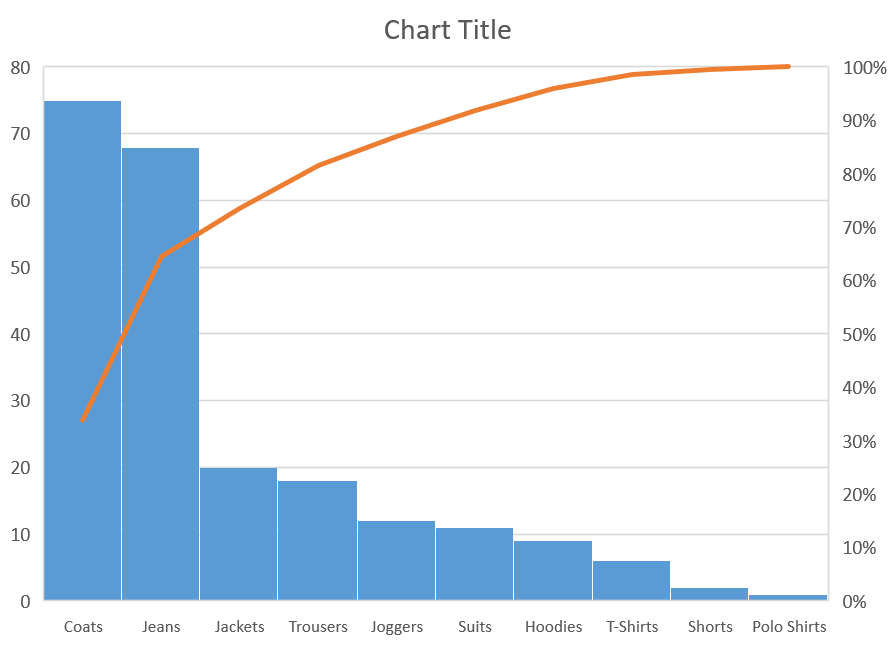

Alternatively, just select one cell – Excel will select the rest. The Pareto chart is a type of built-in chart. It shows the relative importance of each component over the total.Ĭreating a Pareto chart in Excel is easy. Pareto graph chart in ExcelĪs you can see, the Pareto chart highlights the main elements within a data range. Here is an example of a typical Excel Pareto chart. The line represents the cumulative total percentage. The bars in the Histogram represent the relative frequency of the values. In Excel, it is an ordered column chart that contains both vertical bars and a horizontal line. The Pareto chart, also called the Pareto analysis, is a chart that is based on a relative on principle. In this example, we see that around 80% of sales come from 20% of sellers. Let’s start with the analysis of a practical case.
#Pareto charts in excel 2010 how to
In this article, we are going to show you how to create a Pareto chart in Excel.
80% of complaints come from 20% of customers.Ĭreating the Pareto chart is essential, as it allows you to identify the most significant factors to focus on. In economics, 20% of the richest countries have around 80% of the world‘s income. 20% of the bugs often cause 80% of errors and crashes in the software. Here are some examples of the Pareto principle that can be found in real life. This principle has several practical applications in different sectors. For this reason, the Pareto principle is sometimes called the 80/20 rule. The principle states that about 80% of the effects come from 20% of the causes. From him derives a famous principle from which the relative Pareto analysis derives. Vilfredo Pareto was an Italian economist. In this article, I will show you how to make a Pareto chart in Excel.Ī Pareto chart is a kind of chart that includes both bars and a line graph, with the bars representing individual values in descending order and the line representing the cumulative total. I'd prefer to avoid a VBA solution, but I do know how to write VBA code, so if that's the only way, a nudge in the right direction would be greatly appreciated.How to create a Pareto chart in Excel? Do you want to know the major causes on which you should devote your efforts? Here is the reason why you should read this article. I've looked everywhere (I think) for an answer, but cannot figure it out. Please keep in mind that depending on what is selected with the Report Filters on the Pivot Chart, the name/number of categories on the x-axis will change, so I don't think adding a formula into the data label is the answer either. Event B would show 30% on the left axis, have a data label of 600 and the Cumulative total line using the secondary (or right) axis would be at 80% at this point). What I cannot figure out is how to show the data labels so they show the value of each category (e.g. So for example, they may have 6 events on the x-axis: They wish to show data labels above each column to indicate the number of occurrences. I should also mention it is based on a Pivot Chart with 3 different Report Filters. So far, this is a normal and easy to create Pareto. Then, the secondary Y-axis is used for the cumulative percentage, up to 100%. They currently have a chart that shows the percentage of each category on the primary Y-axis. 
I am developing a Pareto Chart for my client in Excel 2010.






 0 kommentar(er)
0 kommentar(er)
